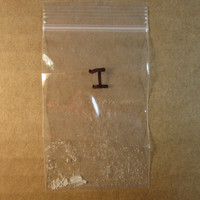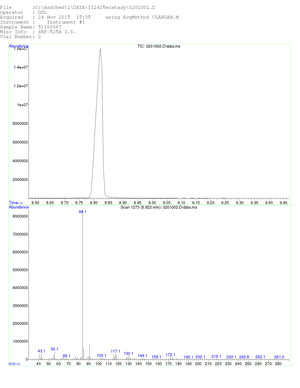New Submissions Are Not Currently Being Accepted
Samples sent after April 10, 2024 will be put on hold.
Viewing desktop version: Switch to Mobile
Crystals (PPPY1)
Sold as: Isopropylphenidate
ID: 4000
| Test Date: | Nov 26, 2015 |
|---|---|
| Pub. Date: | Nov 27, 2015 |
| Src Location: | Portland, OR |
| Submitter Loc: | Portland, OR United States |
| Color: | White |
| Size: | 100 mg |
| Data Source: | DrugsData (EcstasyData) |
| Tested by: | DDL |
| Lab's ID: | 20151100087 |





The sender's note is says they expected isopropylphenidate. We do not have a spectra or standard, nor do we know where to get one. The spectra for the sample is provided because it's possible that this is isopropylphenidate and the spectrum is very close to methylphenidate.
The mass spectrum shows a typical feature in those compounds where the phenyl ring is unsubstituted. The spectrum for this sample could be consistent with isopropylphenidate.
I would have liked to see a slightly stronger ion at m/z 178 to make me confident that this was not isopropylphenidate, though.
There is also the isomer called propylphenidate which has a very similar mass spectrum and the differences are relatively small.
Without a comparison with standards it would be tricky to say whether it is the isopropyl or the propylphenidate.
The molecular ion in the phenidate compound series tends to be very low in abundance and/or absent which can be tricky too. These ester-type compounds have one issue that can occur during GC-MS analysis (which can also happen with some synthetic cannabinoids such as 5F-PB-22 and related esters) and this is what is called transesterification.
For example, if you dissolve, say, methylphenidate in ethanol then GC-induced heat (but also GC liner contaminations and active sites) can convert this into ethylphenidate etc. In other words, alcoholic solvents can sometimes change the nature of the compound if GC is used.
However, the Mass Spectrum for your sample does not indicate anything like that.
We need the help of outside expert analytical chemists and drug geeks to determine what substance matches the mass spectrum (MS) fingerprint. The lab's GC/MS graphs can be viewed by clicking on the thumbnails on this page.
Please use our contact form and include the DrugsData ID (4000) or this URL along with any communications.